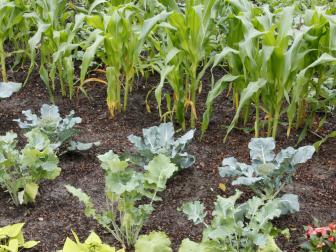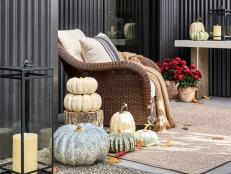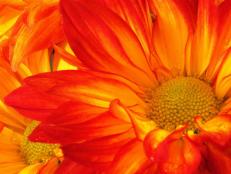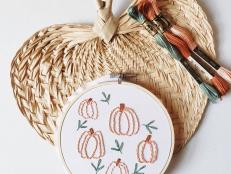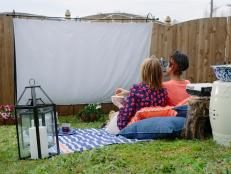How to Start a Fall Garden
Plant these fall vegetables in the summer to enjoy a haul of fresh produce when the temperatures cool.
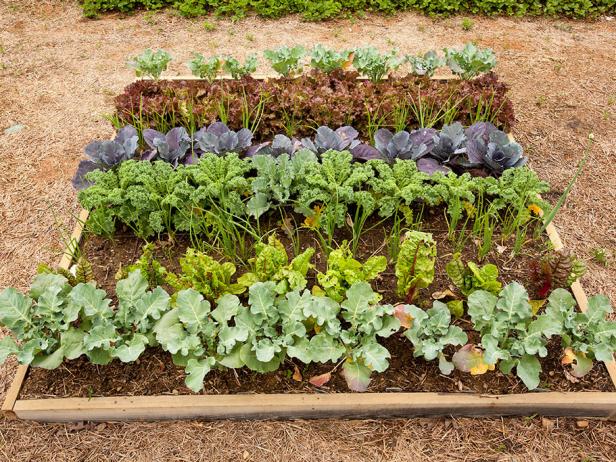
Jane Colclasure/P. Allen Smith

Sure, you're still picking tomatoes and basil out of your summer vegetable garden every day and making salsa and pesto every night. But it's time to start planting your fall garden.
That's right. It's blazing hot, you recently celebrated July 4 and fall feels like a distant rumor as you sip a cold one on the porch in your flip-flops. But you need to be thinking about your fall vegetables while you're enjoying your summer ones.
The goal is to give crops time to mature and produce a harvest before your first frost (although some crops like collards and Brussels sprouts actually have the best flavor after a light frost). For most gardeners, that means planting seeds as early as July; even for areas with mild winters, as it's not just temperature that affects growth, but day length and light as well.
16 Vegetables You Can Plant Now for Fall Harvest 16 Photos
Just as the summer garden gets in full swing, it's time to start thinking about fall. Here's a list of 16 vegetables you can plant in mid to late summer for a fall harvest.
Here are some tips for starting your fall garden, wherever you are.
Plant Earlier Than You (Probably) Think You Need To
By the time most gardeners start thinking about a fall garden, it's already too late to grow one. To get a good harvest of cabbages, carrots, broccoli and other late-season vegetables, you'll need to start many of them at the peak of summer. That means you'll put be putting out transplants or seeds before the kids are even back in school.
You can plant some fast-growing fall veggies like radishes, spinach, and lettuce as late as September, but other veggies like carrots, cabbage and broccoli need a couple of months to mature.
How to Plan a Vegetable Garden
HGTV can make vegetable garden planning less intimidating with tips on garden design and suggestions on how to choose vegetables to grow.
When in doubt, plant your fall crops early, because once that first frost comes, it's all over. Whether you start seeds indoors or sow directly outdoors depends on your available space.
Remove Summer Crops ... or Don't
Whether or not you need to pull up summer plants to replace them with fall ones depends on your climate, space and priorities. In some areas, tomatoes and peppers will keep producing into early fall, so if you have space, leave them be while you get your cool-season crops started. Other summer crops, such as winter squash, may need more time to continue maturing.
On the other hand, if having a fall broccoli crop is everything to you, pull up the tomato plants and get those slower growing broccoli starts in the ground now. If you do switch out tired summer plants and replace with fall crops, take the opportunity to add some fresh compost or other organic material to the area.
Know How Long It Takes for Fall Vegetables to Ripen
Each type of fall vegetable has a general time period from seed to harvest. That means you can time how long it will take to go from carrot seed to carrot, or from broccoli start to spear.
Look on the seed packet or starter plant tag for these words: "Days to Maturity.” That's how long it will take your plant to produce the desired harvest. While the days to maturity may vary by your specific environmental conditions, it's a reliable estimate of how long your growing season needs to be.
Plant your fall vegetables so that the crops you choose have time to reach maturity before the first frost in your area. Find your first frost date, then count backward based on days to maturity for each type of veggie you want to grow. That's your ideal planting date.
The frost date isn't necessarily the end of the season, though. Many fall crops, including collards, parsnips, and Brussels sprouts, can stand a frost and even a light freeze.
Now that you've made space for fall vegetables in your garden plot and planned for an adequate growing season, it's time to pick which crops to plant.
Plant These Fall Vegetables Early
You'll need to plant these slow growers early in the season, to give them time the 9 to 12 weeks they need to reach maturity.
You can grow broccoli from seed or with transplants bought at a garden center.
- Place broccoli transplants about 2 feet apart in the garden.
- Depending on conditions, broccoli will be ready to harvest in 10 to 12 weeks.
- Pick florets before they yellow.
- Use a sharp knife to cut about six inches below the floret head.
- Light needs: Full sun
Brussels sprouts are in the cabbage clan and a good pick for a fall garden.
- Place transplants 12 to 14 inches apart. (Add 20 days to your harvest calculations if you grow from seed outdoors.)
- Stake the plants when they hit 6 inches tall. They'll get 2 to 3 feet tall, so they're big plants and will need support when full of Brussels sprouts.
- Brussels spouts grow along the main stem, from the bottom up. Cut them off when big enough to eat.
- Light needs: Full sun
The trick to growing cabbage is steady, uninterrupted growth so the heads have time to mature.
- Place transplants in garden 12 to 24 inches apart, depending on variety. Bury 1 to 2 inches of the main stem in the soil to produce a stronger anchor for the mature head.
- Cabbage needs consistent moisture to produce good, full heads. Water regularly, applying 1 to 1-1/2 inches of water weekly if it doesn't rain.
- They will make a head in 6 to 8 weeks, but wait till the head is full before harvesting. Squeeze the head to be sure it's firm and full of leaves before cutting and cooking it.
- Some cabbage can be stored on the stem in the garden for weeks after the head are mature.
- Light needs: Full sun.
Carrots
Carrots are super simple to grow as long as they have loose, sandy soil. Heavy, rocky soil yields freaky looking carrots.
- Plant seeds directly into the garden.
- They're slow to germinate. You won't see seedlings for 2 to 3 weeks.
- When seedlings are 2 inches tall, thin to 2 or 3 inches apart.
- Water 1 inch per week to start, then 2 inches per week as roots mature.
- Harvest when you see the shoulders of the carrot root above the soil. Carrots harvested earlier are sweeter and more tender, so don't leave them in the ground too long.
- Light needs: Full sun.
Cauliflower needs consistently cool temperature or it will bolt, so it can be a challenge to grow for gardeners in warmer climates.
- Set out nursery transplants in the garden, spaced 12 inches apart, 6 to 8 weeks before the first frost date. Cauliflower is hard to start from seed, so you'll do better buying small plants from a garden center.
- Water 2 inches per week if no rain.
- Heads will be ready to harvest in 50 to 100 days, depending on variety.
- Cut heads off the plant with a large knife.
- Light needs: Full sun
Start collards from transplants, because growing them from seed is tricky and slow.
- Set out transplants in the garden and space them 18 to 24 inches apart.
- Collards need a lot of water, so give them 1-1/2 inches of water weekly if it doesn't rain.
- Harvest leaves when they're dark green and at least 10 inches long. Old leaves can be tough and stringy.
- Cut the leaves from the outside of the plant, leaving the middle leaves to continue to grow.
- Light needs: Full sun to part shade
Plant These Fall Vegetables Later
These speedy-growing vegetables mature in 8 weeks or less, meaning you can plant them later in the season and still have a harvest by frost. They're all cool season crops, which means they don't like summer's heat, another reason to wait a bit to plant them. To keep yourself supplied in fresh-picked vegetables throughout the fall growing season, consider succession planting, where you plant seeds or transplants every few weeks so you always have a fresh crop on the way.
Arugula has a peppery taste that's great in salads. Sow seeds directly in the ground.
- Seedlings emerge in 7 to 14 days.
- Arugula will be fully grown and ready for harvest in 3 to 4 weeks.
- Cut leaves when they're large enough to eat. Remember, the earlier you harvest them, the more tender and sweet they are.
- Light needs: Full sun to part shade
Beets are high in fiber, full of vitamin C, and you can eat the greens as well as the roots.
- Place beet starter plants in the ground 3 to 4 inches apart.
- Beets will be ready to harvest in 4 to 6 weeks.
- Pull them up as soon as they're at least golf ball-sized. The sooner you harvest them, the better they taste. Old beets are nasty, bitter and tough.
- Light needs: Full sun
Kale is very cold-tolerant and can be grown year-round in many zones. Cold temperatures give it a sweet, nutty flavor.
- Set out starter plants.
- Kale grown from transplants will be ready to harvest in 4 to 6 weeks.
- Cut leaves from outside the bunch as soon as they're large enough to eat.
- Light needs: Full sun to part shade
Mustard Greens
Mustard greens aren't as frost-hardy as their cousins collards and kale, but they're just as easy to grow and nutritious.
- Place starter plants 12 to 18 inches apart.
- Plants will have edible leaves in about 4 weeks.
- Cut leaves from the outside of the plant to harvest.
- Light needs: Full sun to part shade
There are winter radishes and spring ones; plant winter radishes in your fall garden. 'China Rose' and 'Long Black Spanish' are good varieties.
- Sow seeds directly into the ground. They prefer loose dirt for best root formation. And it's the root you eat, so this matters.
- Seedlings emerge in 7 days.
- Thin seedlings to allow room for root growth
- Radishes will be ready to pull up and eat in as little as 3 weeks and as long as 6 weeks, depending on variety
- Light needs Full sun
Spinach is super cold hardy, so you can leave it in the ground a long time into the winter
- Sow seeds directly into the soil.
- Thin seedlings to 3 to 4 inches apart.
- Harvest when leaves reach the desired size. There will be leaves ready to eat in as little as 4 weeks.
- Light needs: Full sun
Eat the roots and leaves of this root veggie that's been cultivated for thousands of years.
- Sow seed directly into the ground.
- Seedlings emerge in 5 to 12 days.
- You can harvest and eat turnip leaves in as little as a month. You'll need to wait 2 to 3 months to harvest the roots.
- Light needs: Full sun

.-Battle-on-the-Beach-courtesy-of-HGTV.-.jpg.rend.hgtvcom.196.196.suffix/1714761529029.jpeg)





